How to Buy a Monitor: Buying Guide on All Types of Screens
From the resolution and panel type to the connectivity options and refresh rate, there are many things to consider when shopping for monitors. If you are not familiar with the technical specifications highlighted in product listings, you are going to have a tough time. Fortunately for you, we already got you covered with this monitor buying guide. In this guide, we’ll give you a rundown of the things to consider when shopping for the best monitors.
Screen Size
Monitors come in different sizes and formats, from regular 24-inch displays with a 16:9 aspect ratio to 34-inch ultrawide displays with a 21:9 aspect ratio. When choosing the screen size, you should consider your desk space, how far you sit from the screen, and what you are going to use your monitor for.
22-25 inches
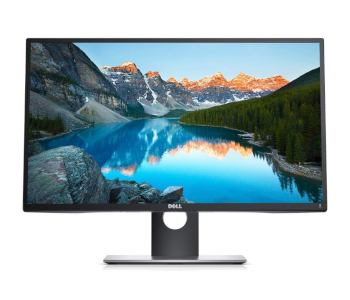
Small 22-25-inch monitors are recommended if you have a small desk. They are also good for a multi-monitor setup, with their lighter chassis and smaller size allowing for easy integration into a multi-monitor arm or wall mount. They are not overwhelming up close and allow you to easily see the entire screen, which can be beneficial in gaming. On the other hand, they are not the best for multitasking due to their more limited screen space and are not as immersive as large displays when used for entertainment.
View the best 24 inch monitors
27-28 inches
Offering a nice balance between screen real estate and footprint, 27-28-inch monitors are versatile displays that look good whether you are sitting less than three feet from the screen or from around three or four feet out. They are great for all-around use, with their larger screen making them more suitable for multitasking and more immersive than smaller monitors.
View the best 27 inch monitors
32 inches
While not as popular as 24-inch and 27-inch monitors, there are also 32-inch monitors on the market. They are excellent for office work, featuring great screen real estate for easy multitasking, which is great for increasing productivity. They are also good for regular gaming and watching movies, especially those featuring a 4K resolution, which makes for a more immersive experience. On the downside, they take up more desk space and can be overwhelming up close.
View the best 32 inch monitors
40+ inches
Monitors larger than 40 inches are even more uncommon than 32-inch monitors, not to mention they are on the expensive side. They are also great for productivity due to their screen space, but their massive size can be overwhelming. For entertainment, they are also good, but if you want a 16:9 display larger than 40 inches specifically for gaming and/or watching movies, consider a TV instead.
View the best 40+ inch monitors
Ultrawide Screens
Featuring 21:9 and 32:9 aspect ratios, ultrawide monitors are excellent for productivity and general use. While they take up more desk space, they are great for multitasking, with their wider screen space allowing for easy management of multiple open windows. They also offer a more immersive gaming experience, especially curved ultrawide monitors larger than 30 inches.
- Ultrawide monitors under 30 inches (25-inch, 29-inch) are good for productivity and are more suitable if you have limited desk space. They are also cheaper, with some of the best ones selling for less than $300, which is great if you have a tight budget.
- Ultrawide monitors larger than 30 inches (34-inch, 35-inch, 38-inch, 49-inch) are even better for office work and productivity, boasting more screen space. They are also good for gaming, most especially if you love to play racing games, first-person shooters, and action role-playing games, with their wider screen adding more immersion. Actually, many 34-inch and 35-inch ultrawide monitors are built specifically for gaming, featuring high refresh rates and fast response times.
View the best ultrawide monitors
Portable Screens
There are also portable monitors on the market. Most, if not all of them, are under 20 inches and simply look like oversized tablets. While not as versatile as regular-sized monitors, they are easier to carry in your bag. If you want a portable second screen for your laptop or simply want to be able to play games on a larger screen during extended trips, check out the best portable monitors.
Curved Screens
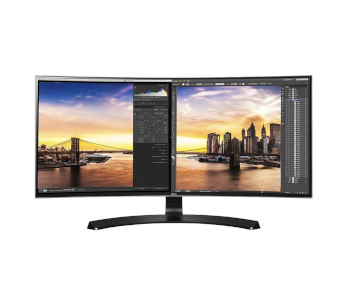
Some monitors feature a curved screen, with ultrawide monitors being the most notable ones, especially those built specifically for gaming. While manufacturers endorse them as being more fitting for our natural field of view and more immersive for games and movies, they are not for everyone. There are many people that simply don’t see the benefits of curved screens and consider them as nothing more than a gimmick that increases the price of monitors.
If you want a curved screen, check out curved ultrawide monitors larger than 30 inches. They make for a more immersive experience than curved 16:9 monitors smaller than 30 inches. They are expensive, though, with limited options under $500. When shopping for curved monitors, consider also the actual curve radius of the screen, as some monitors feature a more pronounced curvature.
- Sharp Curve (1500R, 1800R, 1900R): Curved monitors with a curvature of 1500R, 1800R, or 1900R feature a sharper or more aggressive curvature. They have a thicker chassis when viewed from the side. They are good for gaming, but for productivity, they are a mixed bag, as their sharp curve can be an issue in some applications.
- Soft Curve (3800R): Featuring a relatively thinner chassis than sharp-curved monitors, 3800R curved displays have a softer or less pronounced curvature. They are good for both gaming and office work, but they are not as immersive as monitors with a more aggressive curvature.
There are also 2300R curved monitors, but they are uncommon. They are also good for all-around use and are good options if you want something with a slightly softer curve than 1500R, 1800R, and 1900R curved monitors. Keep in mind that you’ll need to sit close to the screen if you want the full effect of curved screens, regardless of the curve radius.
Resolution
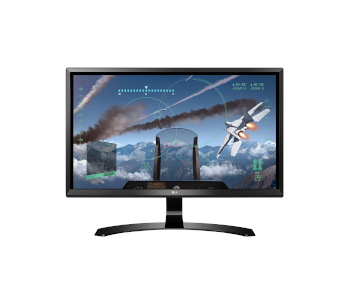
When it comes to regular 16:9 monitors, the three common resolutions are 1920 x 1080 (Full HD or FHD), 2560 x 1440 (Quad HD or QHD), and 3840 x 2160 (4K Ultra HD or 4K UHD). Unless you are shopping specifically for a dirt-cheap secondary monitor for a multi-monitor setup, there is very little reason to get a monitor with a resolution lower than 1080p these days.
For 22-25-inch monitors, a 1080p resolution is good enough for both office work and gaming. It offers good pixel density and won’t put a lot of stress on your graphics card, which makes for more consistent gaming performance. A 1440p resolution is also good on a 22-25-inch display if you want more detailed images and sharper texts.
For 27-28-inch monitors, a 1440p resolution is considered the sweet spot. A 4K resolution also looks good on such monitors and is recommended for professional use. While many people have no issues with it, a 1080p resolution on a 27-28-inch monitor is not recommended – it will translate to a lower pixel density with noticeable pixels when sitting close to the screen. It’s good enough for gaming if you sit from a distance, but if you sit less than three feet from the screen, you may find the low pixel density unsightly.
For monitors larger than 30 inches, 4K is the ideal resolution for a good pixel density, especially if you are going to use your monitor for office work and productivity. For 32-inch displays, a QHD resolution is also good. Unless you want a cheap monitor larger than 30 inches, we don’t recommend 32-inch 1080p monitors – their low pixel density means images and texts will not be very sharp.
There are also 5K (5120 x 2880) and 8K (7680 x 4320) monitors on the market, but there aren’t many options to choose from, not to mention they are extremely expensive. If you want even higher resolutions for professional use, consider 5K and 8K monitors. But for gaming, they are not recommended since there’s not much support for those resolutions at the moment.
Ultrawide Resolutions
Since they have a different aspect ratio, ultrawide monitors don’t feature the same resolutions as 16:9 monitors. Instead, they feature the 21:9 and 32:9 ultrawide versions of 1080p, 1440p, 4K, and 5K resolutions. As with regular 16:9 monitors, a higher resolution is recommended for larger screens for better pixel density, which translates to sharper texts and more detailed images.
- 21:9 ultrawide monitors feature the following resolutions: 2560 x 1080 (UWHD), 3440 x 1440 (UWQHD), 3840 x 1600 (UW4K), and 5120 x 2160 (UW5K). UWHD is usually featured in ultrawide monitors smaller than 30 inches, while UWQHD is the common resolution of 34-35-inch ultrawide displays, which are the most popular. Meanwhile, UW4K and UW5K are less common, with the former usually featured in ultrawide monitors larger than 35 inches – such as the Dell U3818DW.
- 32:9 ultrawide monitors currently out on the market feature either a 3840 x 1080 resolution (see: Samsung C49HG90) or a 5120 x 1440 resolution (see: Dell U4919DW). They are the 32:9 versions of 4K and 5K resolutions, respectively, with the former being the more suitable for gaming since it’s relatively easier on your graphics card.
For office work and productivity, high-resolution monitors (1440p, 4K, 5K, etc.) with a standard 60 Hz refresh rate are good options. But for serious gaming, where refresh rates are important, 1080p and 1440p monitors with high refresh rates are better options – although there are also some 4K monitors that feature a 100+ Hz refresh rate.
Refresh Rate
The refresh rate is the number of times a monitor refreshes or “redraws” the image on the screen per second, measured in Hertz (Hz). A higher refresh rate leads to increased smoothness in gaming, which is especially beneficial in fast-paced games. But to take full advantage of monitors with very high refresh rates (120 Hz, 144 Hz, 240 Hz), you need a computer that can actually keep up with the monitor’s high refresh rate.
For regular gaming, a 60 Hz refresh rate is good enough, especially if you mostly play story-driven or slow-paced games. That also goes for office work and general use. If you are going to use your monitor specifically for console gaming, a 60 Hz refresh is also perfectly fine, as console games typically don’t go past 60 frames per second. Sure, the Xbox One S/X now supports a 120 Hz refresh rate, but there aren’t many Xbox One games that can actually take advantage of that.
Response Time
Listed in milliseconds (ms), the response time is the time it takes for pixels to change from one color to another. A slower or higher response time will result in a more noticeable motion blur when viewing fast-moving content, which can be distracting.
Fast response times are especially beneficial for fast-paced games. But for slow-paced games and non-gaming use, response times are not as important, especially for the latter. The response times listed by manufacturers are not accurate, though – they usually refer to the gray-to-gray response time only. If you want to check the actual response time of a monitor, you’ll need to search for hands-on reviews that include response time data.
Keep in mind that response time is different from input lag. Input lag, which is also measured in milliseconds, is the time it takes for a monitor to display or “react” to your input from a controller, keyboard, or mouse. As with actual response times, you’ll need to check hands-on reviews for accurate data on the monitor input lag since manufacturers don’t include input lag in the technical specifications.
Color Depth and Color Space
If you are going to use your monitor mainly for photo editing and other color-critical work, choose a monitor with good color reproduction, one that can display more colors and has great coverage for either the sRGB color space or the wider Adobe RGB color space.
Color depth determines how many distinct colors a monitor can display, with most consumer monitors featuring either an 8-bit or 10-bit panel. An 8-bit panel can display 16.7 million colors while a 10-bit panel can display 1.07 billion colors. However, not all monitors have a native 8-bit or 10-bit color depth. Some use a technology called Frame Rate Control (FRC) to achieve better color reproduction or show more colors. For example, an 8-bit monitor with FRC will be able to display 1.07 billion colors instead of 16.7 million.
Color space, on the other hand, determines which specific colors a panel can display. While most monitors use the sRGB color space, there are professional monitors that use the wider Adobe RGB color space instead. There are a few monitors that offer good coverage for both of those color spaces, but they are on the expensive side. The sRGB or Adobe RGB coverage of a monitor is typically listed in the official specifications, but like response times, the rating listed is not always accurate.
Panel Technology
There are three panel technologies or types in monitors: In-Plane Switching (IPS), Twisted Nematic (TN), and Vertical Alignment (VA). All three have pros and cons that you need to consider when shopping for the best monitors.
IPS
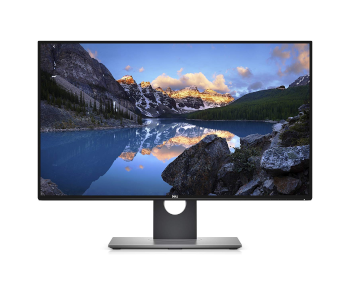
IPS monitors have good color reproduction and viewing angles. They are the most suitable for office work and general use. They are also good for gaming, especially if you put more stock in picture quality than response times and refresh rates – although there are also IPS gaming monitors that feature fast response times and very high refresh rates. While there are a lot of budget options out there, IPS monitors are more expensive than TN and VA monitors, most especially those built specifically for gaming.
TN
TN monitors are best used for pure gaming. They have fast response times and low input lag and usually feature a very high refresh rate. They are great for fast-paced competitive games such as Overwatch and Counter-Strike: Global Offensive. TN monitors are also cheaper than IPS and VA monitors. They are not recommended for productivity, though. While there are some models with fairly decent picture quality, TN monitors have subpar picture quality in general, with mediocre contrast and narrow viewing angles.
VA
Often described as the middle ground between IPS and TN monitors, VA monitors have the best contrast ratio, which translates to more vibrant images. A high contrast ratio is especially great for games and movies. VA monitors are good for general use and entertainment, but they have narrower viewing angles compared to IPS monitors and are usually the worst regarding response times.
For office work and productivity, IPS monitors are the best, with VA monitors being decent options as well. For regular gaming, IPS and VA monitors are better than TN monitors due to their better overall picture quality. For competitive gaming, TN monitors are the best because of their extremely fast response times, low input lag, and very high refresh rates.
Connectivity
Not all monitors include the exact same set of connection ports. Some simply feature an HDMI port and a DisplayPort while others include a USB hub and a DisplayPort Out. HDMI and DisplayPort are the most common video input ports seen in monitors. For the former, it’s either HDMI 1.4 or HDMI 2.0; for the latter, it’s either DisplayPort 1.2 or DisplayPort 1.4. The newer versions of both ports support higher refresh rates and higher resolutions.
For 4K monitors, in particular, DisplayPort 1.2 is good enough since it can fully support a 3840 x 2160 resolution at 60 Hz. If you want to connect via HDMI, the monitor needs to have an HDMI 2.0 port. Unlike the older HDMI 1.4, HDMI 2.0 is not limited to a 30 Hz refresh rate when running at 4K resolution. Keep that in mind if you are in the market for the best 4K monitors for PS4 Pro and Xbox One X.
There are also monitors that feature DVI and VGA ports. While they are more limited than DisplayPort and HDMI, they allow for easy connectivity with older computers. If you want to use your monitor as a bigger screen for your laptop, consider monitors that include a Mini DisplayPort or a USB-C port. Of the two, USB-C is the more useful port because it allows for video input, data transfer, and power delivery over a single cable, which is convenient. However, some USB-C monitors simply allow for video input over USB-C and can’t fully charge a laptop.
If you want to build a daisy chain setup – a more seamless multi-monitor setup where only one monitor is directly connected to the computer – go for a monitor that includes a DisplayPort Out and supports daisy chaining. A monitor with a DisplayPort Out can act as a primary or intermediary unit in a daisy chain setup.
And as for accessory ports: Most monitors include an audio out port for headphones or external speakers, which is great since monitor speakers are usually mediocre. There are also monitors that feature a USB hub, a mic in port, and an SD card slot. Of the three, the former is the most useful, especially if your computer is under your desk and does not feature an easily accessible front-facing USB hub. It’s even better if one of the USB ports supports fast charging.
G-Sync and FreeSync
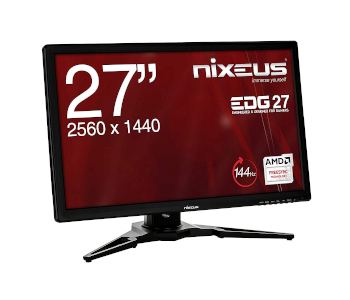
G-Sync and FreeSync are adaptive synchronization technologies that allow for variable refresh rates in monitors. When G-Sync or FreeSync is enabled, the monitor refresh rate dynamically adapts to the graphics card out, eliminating screen tearing, which is when the monitor is displaying multiple frames at the same time with ugly horizontal lines across the screen.
For instance, if the graphics card output drops to 43 frames per second, the refresh rate changes to 43 Hz. If the output changes to 56 frames per second, then the refresh rate also changes to 56 Hz. This is especially beneficial when playing graphically intensive games at max or near-max settings. (For non-gaming use, G-Sync and FreeSync are useless, so don’t worry about them when shopping for office monitors.) Although they are essentially the same in functionality, G-Sync and FreeSync are implemented differently, with the former considered as the more premium technology.
G-Sync
Developed by Nvidia, G-Sync offers more stable and consistent performance, with consistently low input lag and wide effective ranges. G-Sync monitors – which are equipped with a proprietary hardware module from Nvidia – only work with Nvidia graphics cards, and only when connected via DisplayPort. They are also significantly more expensive and are not as widely available as FreeSync monitors.
FreeSync
An AMD technology, FreeSync is the more commonly implemented adaptive sync technology in monitors, with many budget monitors featuring it. While their performance varies from model to model, FreeSync monitors are cheaper, with many options under $300. They are also more versatile, with some monitors allowing for FreeSync over both DisplayPort and HDMI. FreeSync over HDMI is great if you want to use your monitor for gaming on Xbox One consoles, which now support FreeSync.
View the best FreeSync monitors
“G-Sync Compatible”
Announced at CES 2019, G-Sync Compatible monitors are simply FreeSync monitors that allow for variable refresh rates when connected to GeForce GTX 10-Series, GeForce RTX 20-Series, and newer Nvidia graphics cards, but only via DisplayPort. Compared to real G-Sync monitors, G-Sync Compatible monitors are significantly cheaper and are good options for those who own Nvidia graphics cards but can’t afford G-Sync monitors.
View the best “G-Sync Compatible” monitors
High Dynamic Range (HDR)
HDR is a technology that allows for more vibrant and more realistic images, with a wider range of colors, better contrast, and increased brightness. It’s great for games and movies, most especially if the monitor has a large screen and a 4K resolution. However, HDR monitors are not as good as HDR TVs regarding HDR performance. While there are many monitors that support HDR10 – the most common HDR format – most of them can’t display HDR content properly.
If you want a monitor that offers good HDR performance, there are very few options to choose from, not to mention all of them are a lot more expensive than most monitors. For example, the Acer Predator X27 and the Asus ROG Swift PG27UQ – a pair of 4K HDR monitors – both sell for around $2,000.
You can check out monitors with DisplayHDR certification from the Video Electronics Standards Association (VESA) if you are interested in buying HDR monitors. However, only the monitors under the DisplayHDR 1000 category are worth considering if you want good HDR performance – the ones under the lower categories are either decent at best or simply mediocre regarding the actual HDR performance.
Chassis Design
While it’s not as important as the actual technical specifications, the chassis design is also a factor when shopping for monitors, especially for those who want an aesthetically pleasing setup. Monitors intended for general use and office work usually feature a plain, uninteresting design that will not look out of place in an office environment. However, some are more stylish than others, featuring very thin bezels at all sides, which is great for a multi-monitor setup. There are also monitors with an extremely thin chassis when viewed from the side.
Gaming monitors, on the other hand, usually feature a more attractive chassis. Some models feature a futuristic design while others include a customizable lighting system – the Dell Alienware AW3418DW is a good example of a monitor that checks both boxes. If you don’t want a flashy gaming setup, there are also many monitors that feature a simpler or subtler chassis design.
Ergonomics
If you want to be able to easily adjust the screen position for a more comfortable setup, consider monitors with a fully adjustable stand. There are many monitors that offer height, tilt, swivel, and pivot adjustments – although some have limited adjustment ranges. For office use, monitors with good ergonomics are recommended because not everyone who will use the monitor will have the same screen position/angle preferences when working.
Dell UltraSharp monitors are great examples of monitors with good ergonomics. They usually feature a generous swivel range and an option to rotate to portrait orientation (which is useful for reading long documents), along with height and tilt adjustments. The Samsung C27HG70 is an example of a monitor featuring a fully adjustable stand but with limited adjustment ranges.
If you are shopping for budget monitors under $200, one of the first things you’ll notice is that many monitors have poor ergonomics, only offering a tilt adjustment. It’s one of the downsides you’ll need to accept if you want to keep your costs low.
VESA Mount Interface
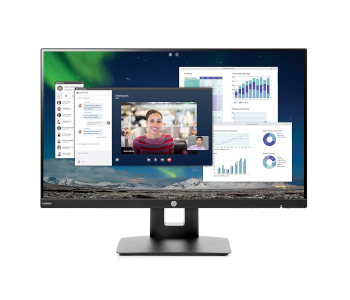
If a monitor has limited stand adjustability, you can mount it to a more flexible third-party monitor stand/arm instead. Most monitors feature a 100 x 100 mm VESA mounting interface at the back, which allows for easy compatibility with most third-party monitor stands. While they are less common, there are also monitors that feature a smaller 75 x 75 mm or a larger 200 x 200 mm VESA pattern.
There are monitors that don’t feature a VESA mounting interface, though, with ultra-thin monitors – which feature an ultra-thin chassis – being the most notable examples. For monitors without a VESA mounting interface, you can use a third-party VESA mount adapter.
View the best VESA mount monitors
Touchscreen
There are also monitors that feature a touchscreen. While there aren’t many of them around – with not many good options outside of those 1080p IPS touchscreen monitors – they are good for people who have physical disabilities and find it difficult to use a regular keyboard/mouse setup. They are also more interactive to use and can speed up certain tasks, but they can be uncomfortable to use for extended periods.
Speakers
The monitor internal sound system is one of the last things you need to worry about when shopping for monitors. While there are a few decent-sounding ones, monitor speakers are not that great, especially those included in budget monitors. If you want good sound quality when gaming or watching movies, go for headphones or external speakers instead.
Summary
With so many factors to consider, we understand if you are still confused about which aspects are more important for whatever you plan to do on your monitor. Here’s a summary of the things to prioritize when shopping for the best monitors for different usages, along with some monitor recommendations:
For productivity and general use, you should prioritize picture quality, resolution, connectivity, and ergonomics. A large screen with a high resolution is great for multitasking, while a monitor with superb color accuracy is ideal for color-critical work. The BenQ PD3200U and the Dell U2518D are good examples of monitors that will work great for professional use and general use.
For regular gaming, picture quality and resolution are more important than response times and refresh rates, especially if you mostly play turn-based RPGs, survival horror games, and other story-driven or slow-paced games. Both IPS and VA monitors are good for regular gaming, with the latter being the more recommended if you want a better contrast ratio.
If you mostly play graphically intensive games at max or near-max settings and regularly experience frame rate drops, go for monitors with FreeSync or G-Sync. Larger screens are also great for games with pretty graphics because they make for a more immersive experience, especially ultrawide displays larger than 30 inches. The LG 27UK650-W and the Samsung C32HG70 are examples of excellent monitors for regular gaming.
For competitive gaming, go for monitors that offer extremely fast response times, very low input lag, and high native refresh rates. Most monitors that fit that description are TN monitors, though, with the ViewSonic XG2402 being one of the most notable models out there. If you want an IPS panel, check out the Asus ROG Swift PG279QZ or the Gigabyte Aorus AD27QD.
For all-around usage, you need to consider all aspects, obviously. There are many good all-around monitors on the market, including ultrawide monitors. The Dell U2718Q and the LG 34UM88C-P are good options if you want an office monitor that also works well for regular gaming. On the other hand, the Acer Predator X27 and the Dell Alienware AW3418DW are good options if you want a gaming monitor that also works well for productivity and general use.

